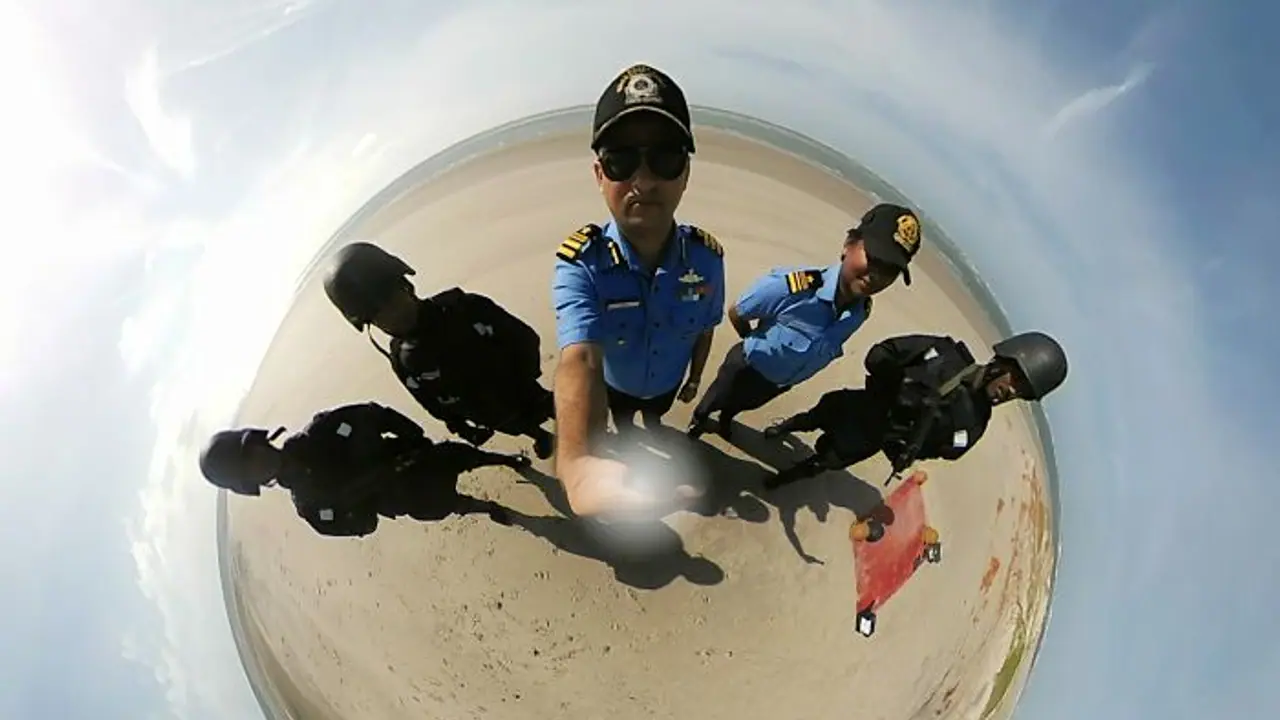MyNation captures in action India’s first Coast Guard women deployed in a combat role at Mandapam coast. They keep an eye on Indian fishermen who end up in Lankan jails, lethal smugglers and the dormant but dangerous LTTE
Mandapam, Tamil Nadu: The white afternoon sun, cobalt sea and the gently bobbing green-and-yellow fishing boats conceal a darker story that of greed, day-to-day danger and the need for sleepless vigilance.
This is the karmabhoomi of Anuradha Shukla, 31, and Shirin Chandran, 29. They are among the first four women in the Indian Coast Guard to be inducted in a combat role in 2016.
MyNation travelled to Mandapam to tell their story using a 360-degree camera for technology to allow us capture their spectacular yet challenging vastness of their territory they guard.
The coast along Mandapam and Rameswaram, where the Gulf of Mannar enters the needleís eye of the Pamban Pass and comes out at Palk Bay, is fraught with news of Indian fishermen straying into Sri Lankan waters and getting arrested, human trafficking and infiltration attempts, drug, gold and arms smuggling, and the long after-shadow of a battered militancy for a Tamil homeland.

Recently, 50 boxes of ammunition, 41 light machine guns, 22 machine guns, five detonators and launchers buried in a piece of farmland in Rameswaram, triggering fears of LTTE revival.
At this confluence of history, geography and politics, the two young women now watch over the seas flying in their hovercraft, armed with pistols, light machine guns and carbines.

After joining the Coast Guard, we women officers used to take care of logistical and administrative work, for the people who are on sea, says Shirin. One day in 2015, a signal came asking for women volunteers to join in a combat role.

Both say it was not an altogether easy transition.
ìI wonít say there was no problem after joining in this role. But as you perform, your male colleagues start accepting you. When you wear the uniform, you forget the gender issues, says Shirin, who grew up in Palakkad, Kerala.

Anuradha and Shirin guard one of Indiaís most sensitive coastline. While over over-ambitious Indian fishermen getting breaching the international line and landing up in Lankan jails is the commonest problem, drugs and gold smuggling and gun-running are more ominous.
But the silent portentous presence even as it licks its wounds is of the LTTE. While the militancy has been defeated, its logistical network still exists between southern Lanka and the Tamil mainland, says commanding officer of Air Cushion Vehicle (ACV) Squadron, Coast Guard, Mandapam, Ankur Marodia. It is still used to run illegal activities, smuggle in stuff, he says. With all these challenges, the two women in combat role is a tremendous boost to the force.
Anuradha is the daughter of a photographer in small-town UP. Coming from my background, joining the force was itself unthinkable, forget getting on the frontline of combat, says Anuradha, who spent her childhood in Fatehpur near Lucknow.
Anuradha is already an icon among young girls in her little town and her family. They look up to me. They have a great deal of curiosity about what I do, whether they can grow up and be counted as well, she says.
It is the same experience with Shirin. We do have an effect on young girls. My relatives and friendsí daughters and nieces ask me how I manage to stay alone away from home, go on dangerous missions alongside men. I tell them that I do this for nation, and that makes me very proud.
"
"
Shirin tells MyNation she wants to become a squadron commander someday, before gently taking off in her hovercraft and flying out to the sea.
(Video storytelling: Archit Sinha)
